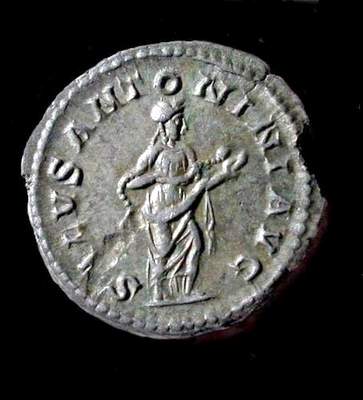

AR denarius, Marcus Aurelius Antoninus Elagabalus, AD 218 - 222 |
| |
 |
Varius Avitus Bassianus Elagabalus, the son of Julia Soaemias, took the name Marcus Aurelius Antoninus as his official name to appear on his coinage. Elagabalus was also a high-priest of the sun-god Elagabalus at Emesa in Syria. In AD 218 he became emperor, but his extravagance and licentious behaviour made him unpopular. In AD 221 his grandmother Julia Maesa arranged for the adoption of her other grandson Alexianus as Caesar. Discontented troops murdered Elagabalus, together with his mother the following year. Initially engravers portrayed Elagabalus as a younger version of Caracalla - Elagabalus only arrived in Rome in AD 119. Later more individualised portraits appeared showing him without side whiskers - in AD 220 he was again portrayed with a side whisker. Elagabalus is usually depicted as a handsome youth with wide set eyes, arching brows, a hooked nose and a full mouth. Obv. Elagabalus, laureate bust right, IMP. CAES. M. AVR. ANTONINVS AVG.Rev. Salus standing, feeding serpent held in arms, SALVS ANTONINI AVG. Here the reverse legend may refer to either an illness of the emperor, or, as was customary, link the emperor Antoninus Augustus' good health to the metaphorical health of the Roman state. |
| Republican | Imperatorial | |
Greek Imperial | Byzantine |